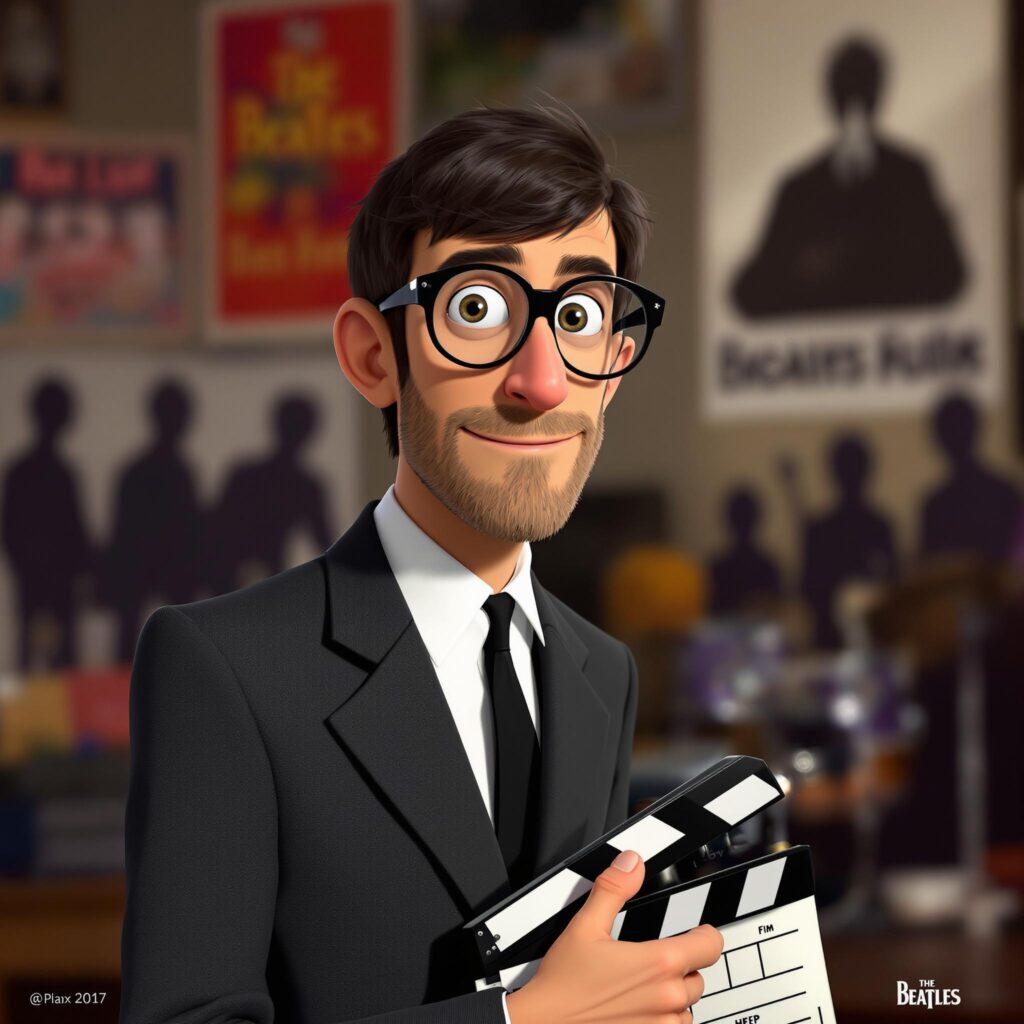Hall of Fame Profile
Introduction
When the Beatles exploded onto the global stage, their music was only part of the revolution. The other half was visual: their style, their humor, their energy, and their irreverence. At the heart of this transformation stood Richard Lester, the American-born, British-based director who brought the Beatles’ personalities to the big screen and, in the process, invented an entirely new language for music films. Lester’s work not only defined the image of the Beatles for generations but also changed the course of cinema and pop culture.
Early Life and Career
Richard Lester was born on January 19, 1932, in Philadelphia, Pennsylvania. A child prodigy, he graduated from high school at 15 and from college at 19. By the early 1950s, he had moved to London, seeking creative freedom in the vibrant world of British television. Lester quickly made a name for himself with his inventive, fast-paced, and often surreal comedic style, collaborating with Peter Sellers, Spike Milligan, and the Goons on groundbreaking TV shows.
The Beatles Connection: “A Hard Day’s Night”
In 1964, the Beatles were already the biggest band in Britain, but the world had never seen anything like them. United Artists wanted a film to cash in on Beatlemania, but the band insisted it be something fresh and authentic. Enter Richard Lester. Chosen for his comic sensibility and modernist approach, Lester was the perfect match for the Beatles’ wit and energy.
“A Hard Day’s Night” was shot in a mere six weeks on a modest budget, but what emerged was nothing short of revolutionary. Lester’s handheld cameras, quick cuts, and documentary realism captured the chaos and joy of Beatlemania. He let the Beatles be themselves—funny, cheeky, slightly subversive—and in doing so, created a film that felt spontaneous and alive. The movie’s style—part music video, part cinéma vérité, part slapstick comedy—set the template for countless pop films and music videos to come.
“Help!” and Pushing the Boundaries
After the success of “A Hard Day’s Night,” the Beatles and Lester teamed up again for “Help!” (1965). This time, the budget was bigger, the locations more exotic (the Austrian Alps, the Bahamas, Salisbury Plain), and the humor even more surreal. “Help!” was a psychedelic romp, blending spy parody, absurdist comedy, and musical spectacle. Lester’s direction was bold and experimental, using jump cuts, visual gags, and color in ways that anticipated the coming psychedelic era.
“Help!” also deepened the Beatles’ global appeal, showing them as both approachable and otherworldly. The film’s influence is still felt in the DNA of everything from Monty Python to MTV.
Shaping the Beatles’ Image
Richard Lester didn’t just direct the Beatles—he helped invent their public personas. He encouraged their natural humor, their camaraderie, and their willingness to poke fun at themselves and their fame. His films showed the world that the Beatles were not just musicians, but icons of cool, wit, and modernity. The Beatles’ playful, anarchic spirit in these movies became as much a part of their legacy as any song.
Innovations and Legacy
Lester’s work with the Beatles introduced a new visual style to popular culture. His use of quick editing, unconventional camera angles, and a blend of reality and fantasy set the stage for the modern music video and influenced directors from Martin Scorsese to David Fincher. MTV, music television, and even commercials owe a debt to Lester’s groundbreaking approach.
Beyond the Beatles, Lester’s career flourished. He directed “The Knack …and How to Get It” (Palme d’Or winner at Cannes), “A Funny Thing Happened on the Way to the Forum,” “How I Won the War” (starring John Lennon), and later, the “Three Musketeers” trilogy and “Superman II” and “III.” But it’s his Beatles films that remain his most enduring legacy.
The Human Side: Collaboration and Friendship
Lester was more than a director—he was a collaborator who respected the Beatles’ intelligence and instincts. He created an atmosphere on set that was loose, fun, and creative. The Beatles trusted him, and he in turn gave them space to improvise and be themselves. This mutual respect is visible in every frame of their films together.
Enduring Influence
To this day, “A Hard Day’s Night” is hailed as one of the greatest music films ever made—an energetic, joyful time capsule of the 1960s and the beginning of modern youth culture. Filmmakers, musicians, and fans still study Lester’s techniques, and his work is regularly cited as a major influence by directors, editors, and music video creators.
Anecdotes and Remembrance
- Paul McCartney once joked that Lester “made us look good and clever, even when we weren’t.”
- George Harrison credited Lester with teaching the Beatles about film, editing, and the power of visual storytelling.
- John Lennon, who starred for Lester again in “How I Won the War,” found a kindred spirit in the director’s irreverence and creativity.
Legacy in Beatles History
Richard Lester’s partnership with the Beatles was brief but transformative. He helped launch them as global superstars, gave them a cinematic language that matched their musical innovation, and left behind films that are as fresh and funny today as they were in the 1960s. His vision remains a vital part of the Beatles’ story—a testament to the power of collaboration, experimentation, and the joy of creation.
